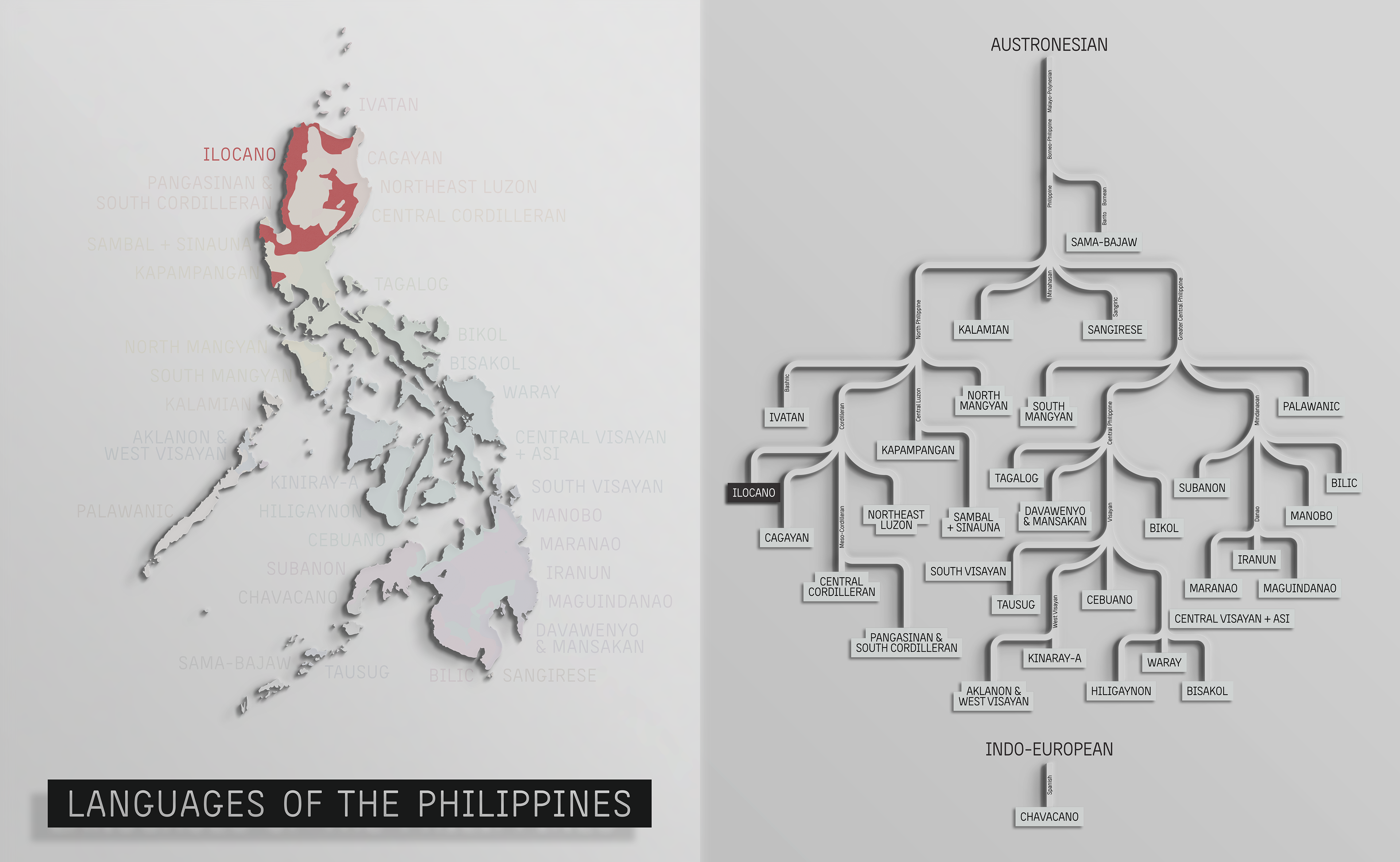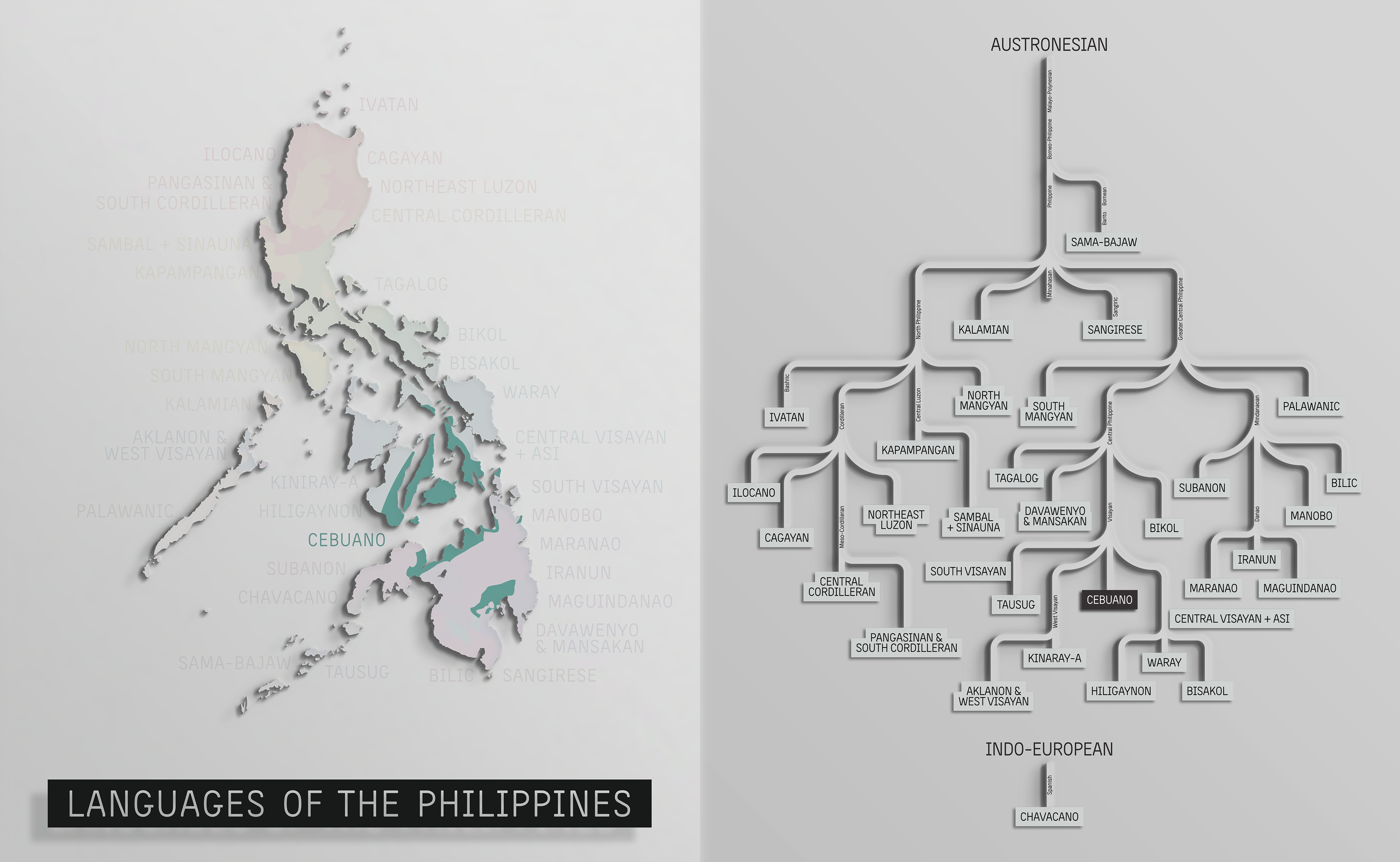An infographic mapping Philippine language communities geographically and taxonomically.
☞ information design, cartography
☞ personal project
Context
The Philippines has nearly 180 indigenous languages as different from each other as German is from Spanish, yet all except one (the national language of Tagalog/Filipino) are locally considered to be “dialects” rather than separate languages. A relic of colonialism and what is called “colonial mentality” in Philippine psychology, this is problematic in that it delegitimizes the knowledge, histories, and cultures of these linguistic communities and endangers the vitality of the languages themselves.
Process
Recognizing this issue, I sought to find a way to visually articulate the nature of these languages as distinct entities. Past study in linguistics proved to be helpful in understanding historical lineages and relationships, forming the basis for an infographic approach. In order to simplify the project, I based my distinctions on a less granular linguistic taxonomy that distinguishes 32 languages and language groupings. While not exhaustive, this strategy still asserts the distinctness of Philippine languages. To balance out the complexity of information, I chose to use a very clean and minimalist style.
Concept
On the work's left, a coloured map of the Philippines shows the geographic extent of language communities. Because of the high number of communities, a broad range of colours is used both for contrast and to signify relations. On the right, a language tree makes it possible to trace the exact relation between languages. I chose to invert the traditional direction of the language tree as a reference to the appearance of a hanging anahaw palm leaf, a culturally significant Philippine symbol.
For each of the 32 communities, there is also a corresponding reiteration of the infographic that highlights the selected community in both the map and tree.



